 Stress is not good for us.
Stress is not good for us.
We all know that.
But stress is bad for pants, too.
What stresses plants and what negative effects does stress cause?
That’s exactly what we are going to learn today.
Keep reading for a list of 7 things that cause stress in cannabis plants. Before we get to that though, let’s find out exactly why stress is bad for your plants.
Contents
Why Stress Is Bad For Cannabis Plants
There are a number of negative effects that can result when your marijuana plants feel stress. Let’s take a look at the most damaging effects.
Impact On Growth And Development
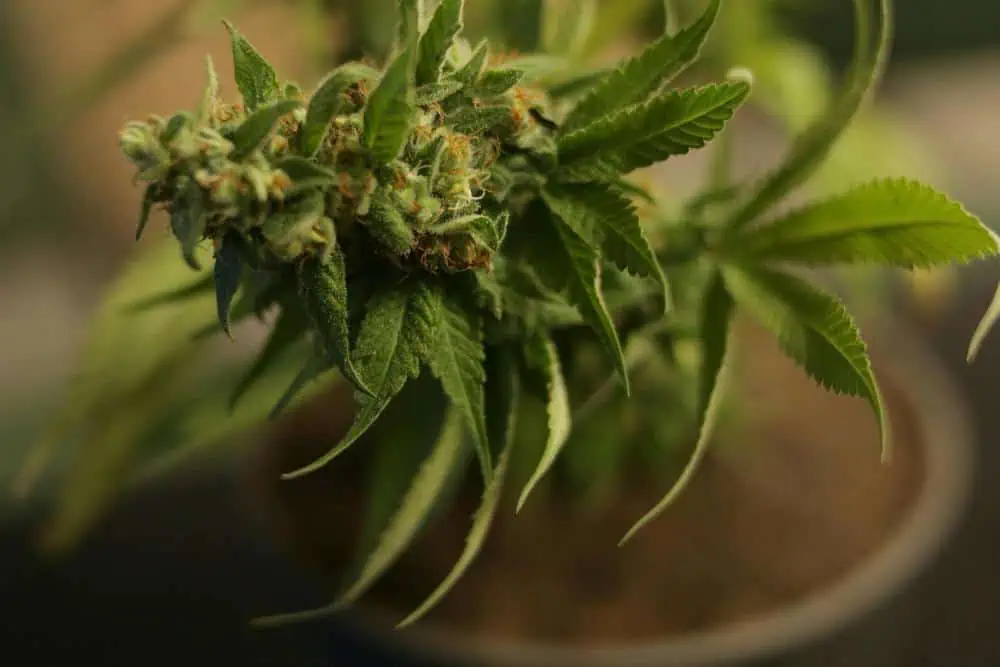
Stress can significantly hamper the normal growth and development of your precious cannabis plants. When a plant experiences stress, its energy is diverted from growth to survival, leading to stunted development.
This means your plants won’t reach their full potential in size or strength, resulting in smaller, less robust plants. Stress can also slow down (or even halt) the flowering process, which directly reduces the yield.
The buds you harvest may be fewer and less dense, ultimately affecting the overall productivity of your grow.
Effects On Cannabinoid Production
Stress doesn’t just impact growth. It also affects the potency of your cannabis plants by reducing the production of cannabinoids like THC, CBD, and others.
When plants are stressed, they produce fewer cannabinoids and terpenes, which are the compounds responsible for the plant’s therapeutic and psychoactive effects. This reduction in cannabinoid levels means that the final product may be less effective, with lower potency and diminished flavor profiles.
If you’re cultivating cannabis for its medicinal or recreational properties, stress can severely impact the quality of your harvest in a negative way. Conversely, reducing stress is a great way to improve the quality of your cannabis buds.
Increased Susceptibility To Pests And Diseases
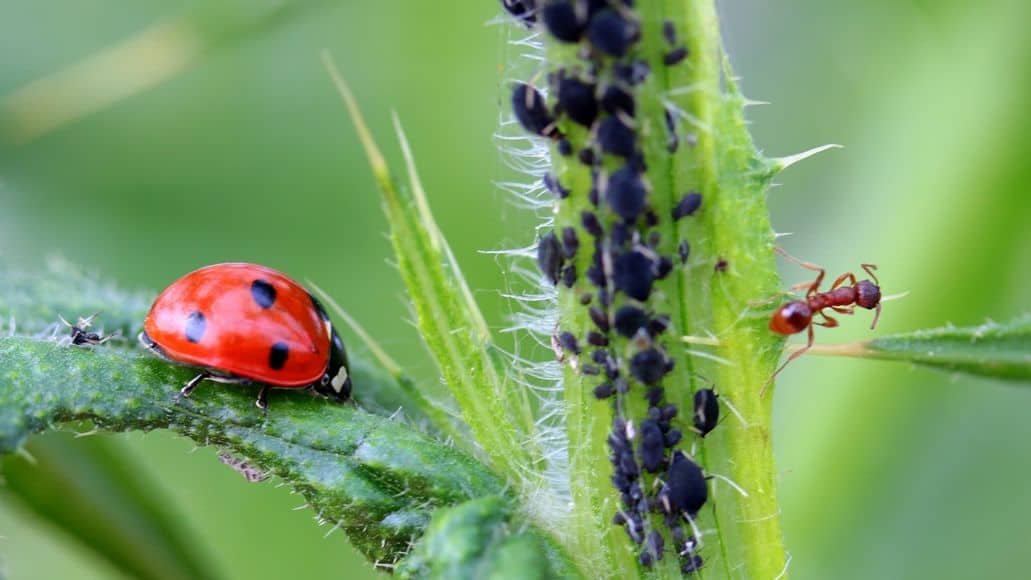
Stressed plants are also much more vulnerable to pests and diseases, which can devastate your grow. When a cannabis plant is under stress, its natural defenses are weakened, making it an easier target for insects, molds, and pathogens.
Pests like spider mites or aphids can quickly infest a stressed plant, while diseases such as powdery mildew or root rot can take hold more easily.
This not only harms the affected plant but can also spread to other plants in your grow space, leading to widespread issues. Keeping your plants stress-free is crucial to maintaining their health and resilience against these threats.
7 Things That Cause Stress In Cannabis Plants
Now let’s look at the main factors that can cause stress in your weed plants.
Incorrect Watering Practices
Watering your cannabis plants improperly—whether by overwatering or underwatering—can be a significant source of stress. Overwatering drowns the roots, depriving them of oxygen and leading to root rot, while underwatering causes dehydration, forcing the plant into survival mode.
Both extremes disrupt nutrient uptake, stunt growth, and lead to wilting or yellowing leaves. It’s essential to strike a balance, ensuring your plants receive just the right amount of water to thrive.
Poor Lighting Conditions
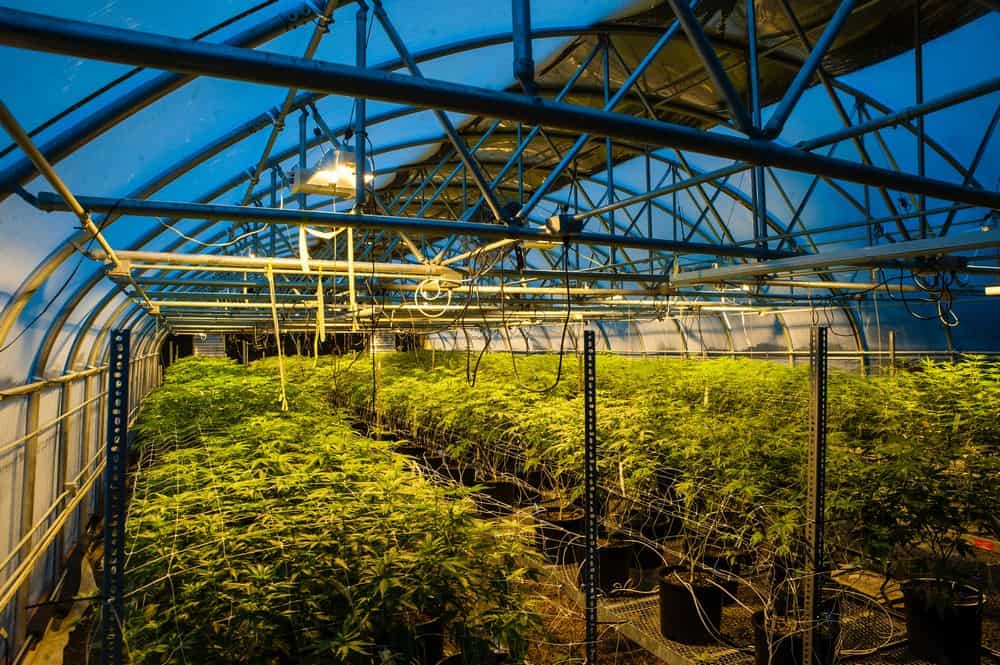
Light is vital for cannabis growth, but too much or too little, as with water, can cause stress. Insufficient light prevents your plants from photosynthesizing effectively, resulting in weak, spindly growth and poor bud development.
Conversely, excessive light can cause light burn, leading to scorched leaves and impaired growth. Properly managing the light cycle and intensity is key to avoiding these issues, ensuring your plants get the optimal amount of light for healthy development.
Temperature Fluctuations
Cannabis plants are sensitive to temperature, and sudden or extreme changes can cause significant stress. Too much heat can lead to heat stress, causing leaves to curl and dry out, while cold temperatures can slow growth and even freeze the plant tissues.
Consistent temperatures within the ideal range (65° – 80° F or 18° – 26° C) are crucial for maintaining healthy growth. You should avoid abrupt temperature swings, whether from poor ventilation or sudden weather changes, to keep your plants thriving.
Nutrient Imbalances
Feeding your cannabis plants either too much or too little can lead to nutrient imbalances, which are a common cause of stress. Overfeeding can cause nutrient burn, where the tips of the leaves turn brown and crispy.
Deficiencies in essential nutrients like nitrogen, phosphorus, or potassium can stunt growth and lead to discolored, unhealthy foliage. It’s important to monitor your feeding schedule and adjust nutrient levels according to your plants’ specific needs to prevent these stressors.
Improper pH Levels
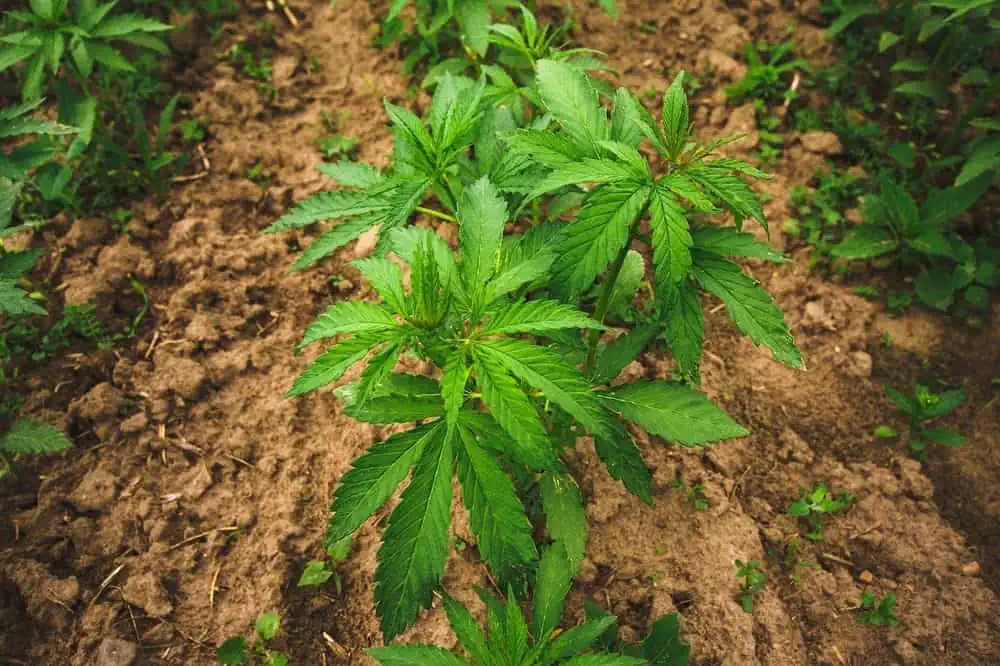
The pH level of your soil or hydroponic solution plays a vital role in nutrient absorption. If the pH is too high or too low, your cannabis plants may be unable to absorb the nutrients they need, leading to nutrient lockout and visible deficiencies.
This can result in stunted growth, yellowing leaves, and overall plant stress. Keeping the pH level within the optimal range (typically 6.0 – 7.0 for soil and 5.5 – 6.5 for hydroponics) ensures that your plants can take up the nutrients they require for healthy growth.
Pests And Pathogens
Pests and pathogens are a direct cause of stress for cannabis plants, and an infestation or infection can quickly compromise their health. Common pests like spider mites, aphids, and whiteflies feed on plant tissues, weakening the plant and making it more susceptible to diseases.
Pathogens such as molds, fungi, and bacteria can cause infections that stunt growth or even kill the plant. Regular monitoring and preventive measures are essential to keep your plants free from these stress-inducing threats.
Physical Damage
Physical damage, whether from pruning, training techniques, or accidental injury, can also stress your cannabis plants. While low-stress training and careful pruning can promote better growth, excessive or improper handling can cause wounds that the plant must repair, diverting energy away from growth and bud production.
Accidental damage, such as broken branches or severe pruning, can lead to shock, slowing growth and reducing yield. It’s important to handle your plants gently and thoughtfully to minimize stress and promote optimal development.
Preventing And Managing Stress In Cannabis Cultivation
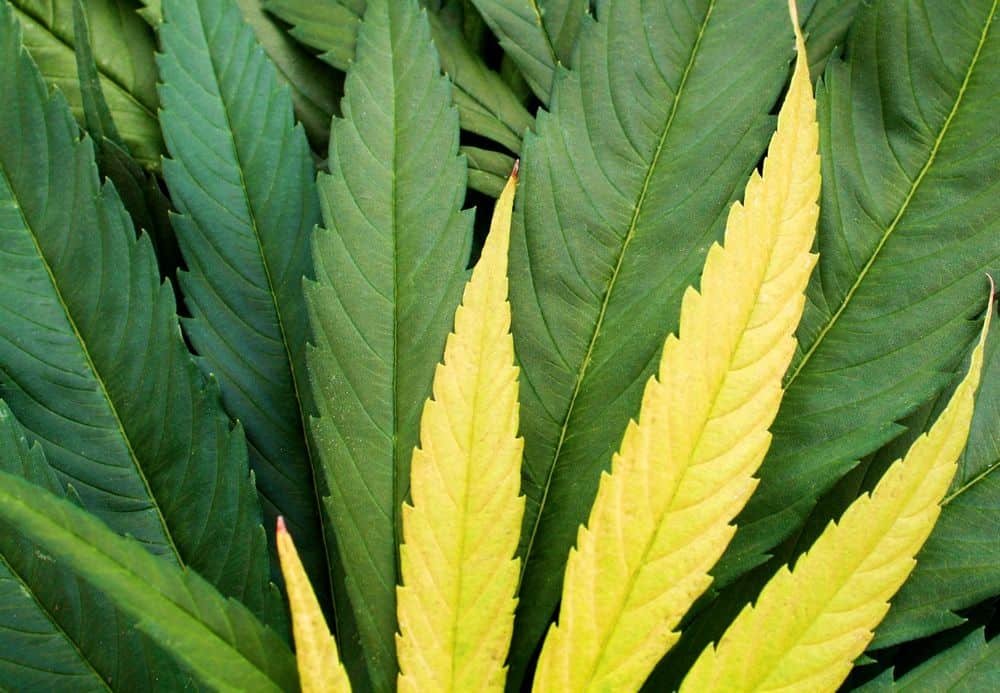
Now that you know what causes stress in marijuana plants, you should also have a good idea as to how to prevent stress. Nevertheless, it makes sense to cover that topic here, too.
Proper Watering And Nutrient Management
Maintaining balanced hydration and nutrition is key to preventing stress in your cannabis plants. To avoid overwatering or underwatering, check the soil moisture regularly and water only when the top inch feels dry. Use containers with good drainage to prevent waterlogging.
For nutrient management, start with a balanced fertilizer and gradually adjust based on your plants’ growth stage. Avoid overfeeding by following recommended dosages and watching for signs of nutrient burn or deficiencies.
Regularly flush the soil or hydroponic system to prevent nutrient buildup and ensure your plants absorb the right amount of nutrients.
Optimizing Environmental Conditions
Creating an ideal environment is crucial for healthy cannabis growth. Control light by ensuring your plants receive the right amount and intensity, with 18 – 24 hours of light during the vegetative stage and 12 hours during flowering.
Avoid direct exposure to intense light sources that could cause light burn. Maintain a stable temperature between 65° and 80° F (18° – 26° C) and monitor humidity levels, keeping them between 40 and 60% depending on the growth stage.
Good ventilation helps regulate temperature and humidity, preventing mold and heat stress. Consistency is key—avoid sudden changes in environmental conditions to keep your plants happy.
Vigilance Against Pests And Physical Damage
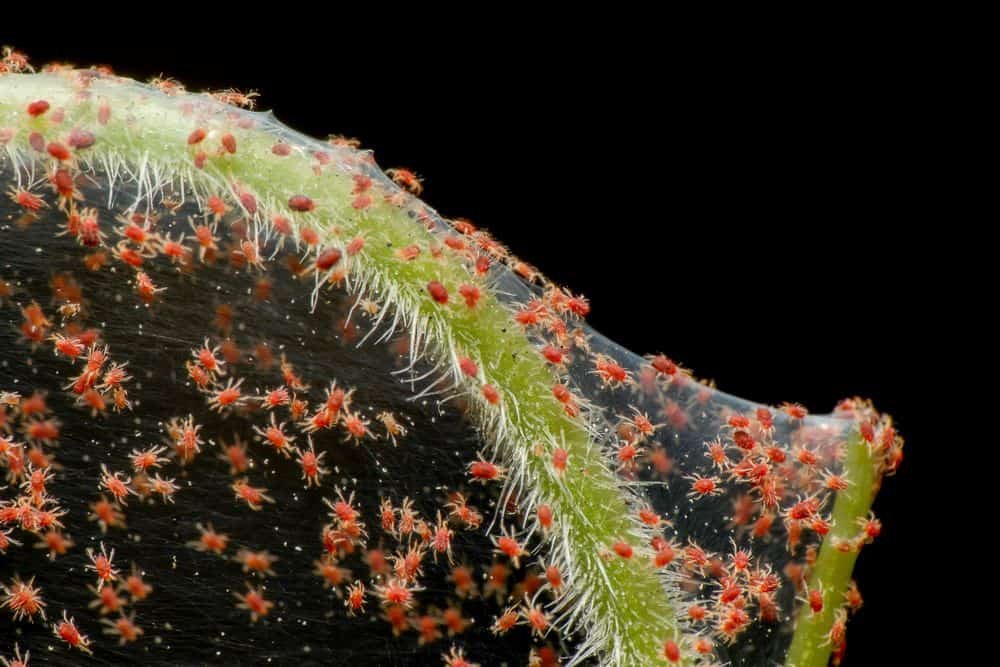
Regular monitoring is essential to prevent stress from pests and physical damage. Inspect your plants daily for signs of pests like mites, aphids, or whiteflies, and act quickly to address any infestations with appropriate treatments. Use organic pest control methods when possible to minimize harm to your plants.
When pruning or training your plants, handle them gently to avoid causing unnecessary wounds. Apply low-stress training techniques carefully and avoid excessive pruning, especially during flowering. By being vigilant and handling your plants with care, you can minimize stress and support their overall health and productivity.
What Causes Stress In Cannabis Plants: Final Thoughts
Stress is detrimental to cannabis plants, affecting their growth, cannabinoid production, and overall health. When plants experience stress, their energy is diverted from growth to survival, leading to stunted development and reduced yields.
This results in smaller, less robust plants and fewer, less dense buds. Stress also impacts the potency and flavor of cannabis by reducing the production of cannabinoids and terpenes, which are crucial for the plant’s therapeutic and psychoactive effects.
Additionally, stressed plants are more susceptible to pests and diseases, which can further compromise their health and spread to other plants in your grow space.
To prevent and manage stress, it is essential to maintain proper watering and nutrient management, optimize environmental conditions, and remain vigilant against pests and physical damage.
By ensuring balanced hydration, nutrition, and stable environmental conditions, as well as handling plants gently and monitoring for pests, you can minimize stress and promote healthy, productive cannabis plants.
Bob says
Is there a way to stress a female auto plant that comes from feminized seeds so that it produces seeds without killing the plant
jordan says
I stressed my fem auto flowers by re potting them, now i have 1ft tall plants looks like one top bud and they are hermaphrodite’s